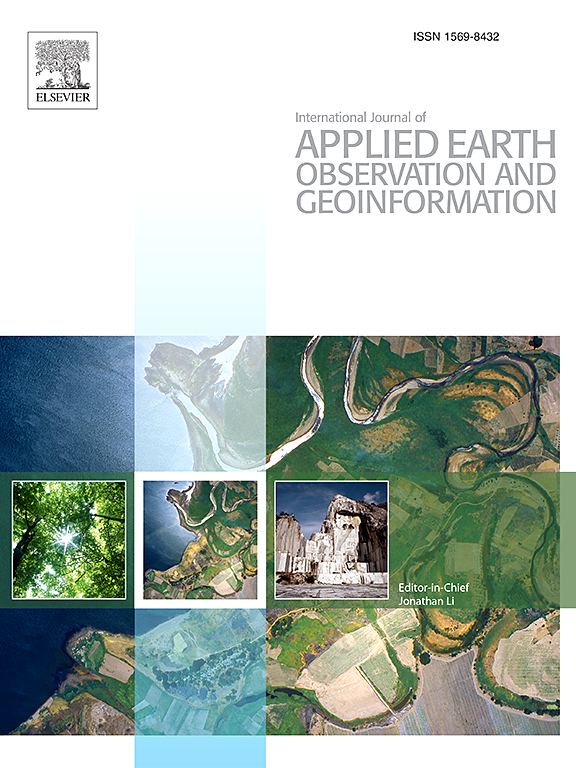Local pathways of association
IF 7.6
Q1 REMOTE SENSING
International journal of applied earth observation and geoinformation : ITC journal
Pub Date : 2025-04-13
DOI:10.1016/j.jag.2025.104531
引用次数: 0
Abstract
Spatial association reveals the interconnected nature of geographical phenomena, describing the interactions and influences of environmental variables across geographic space. Path analysis can explore complex causal relationships between variables by analyzing path coefficients. However, in large-scale studies, path analysis methods are often affected by local effects, which can influence the accuracy and reliability of the results. This study develops a local pathway association (LPA) model to analyze local effects of pathways among variables that integrates path analysis and local pathway coefficient estimations. The LPA model was employed to investigate the spatial heterogeneity of spatial associations between factors such as climate, soil, and vegetation on the Tibetan Plateau. Results indicate that the LPA model effectively reveals the spatial variation characteristics of local path coefficients between geographic variables, avoiding the underestimation or overestimation of global path coefficients in traditional path coefficient studies. The developed LPA model provides an effective technical tool for revealing spatial differences in path associations of large-scale spatial studies. The strong data compatibility of the LPA model allows for broad applicability across various disciplines and a deeper understanding of localized interactions and variations in complex geospatial and Earth systems.
局部联想通路
空间关联揭示了地理现象的相互关联性,描述了环境变量在不同地理空间的相互作用和影响。路径分析可以通过分析路径系数来探索变量之间复杂的因果关系。然而,在大规模研究中,路径分析方法往往会受到局部效应的影响,从而影响结果的准确性和可靠性。本研究建立了一个局部路径关联(LPA)模型,用于分析变量间路径的局部效应,该模型整合了路径分析和局部路径系数估计。利用 LPA 模型研究了青藏高原气候、土壤和植被等因子之间空间关联的空间异质性。结果表明,LPA 模型有效揭示了地理变量之间局部路径系数的空间变化特征,避免了传统路径系数研究中对全局路径系数的低估或高估。所建立的 LPA 模型为揭示大规模空间研究中路径关联的空间差异提供了有效的技术手段。LPA 模型具有很强的数据兼容性,可广泛应用于各个学科,并加深对复杂地理空间和地球系统中局部相互作用和变化的理解。
本文章由计算机程序翻译,如有差异,请以英文原文为准。
求助全文
约1分钟内获得全文
求助全文
来源期刊

International journal of applied earth observation and geoinformation : ITC journal
Global and Planetary Change, Management, Monitoring, Policy and Law, Earth-Surface Processes, Computers in Earth Sciences
CiteScore
12.00
自引率
0.00%
发文量
0
审稿时长
77 days
期刊介绍:
The International Journal of Applied Earth Observation and Geoinformation publishes original papers that utilize earth observation data for natural resource and environmental inventory and management. These data primarily originate from remote sensing platforms, including satellites and aircraft, supplemented by surface and subsurface measurements. Addressing natural resources such as forests, agricultural land, soils, and water, as well as environmental concerns like biodiversity, land degradation, and hazards, the journal explores conceptual and data-driven approaches. It covers geoinformation themes like capturing, databasing, visualization, interpretation, data quality, and spatial uncertainty.
 求助内容:
求助内容: 应助结果提醒方式:
应助结果提醒方式:


